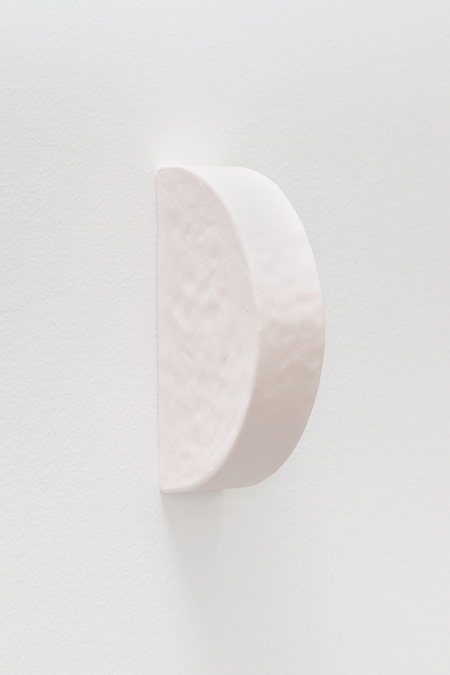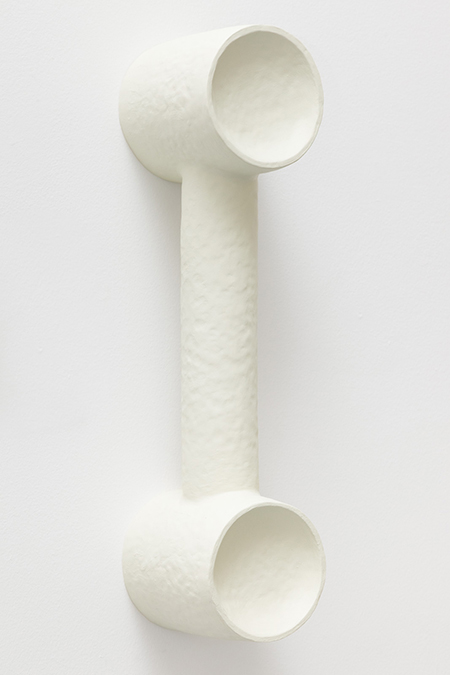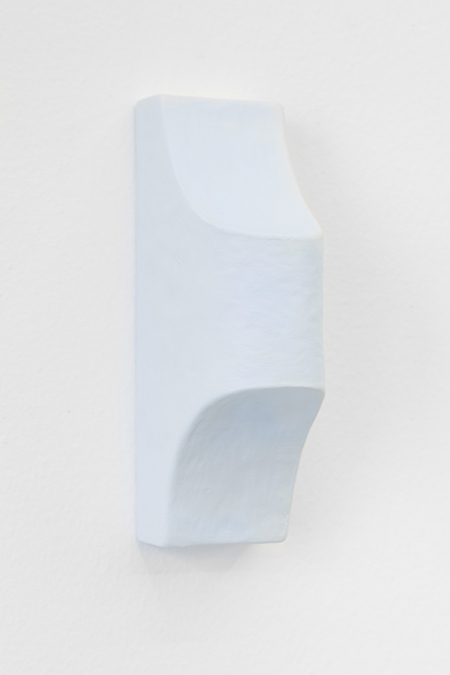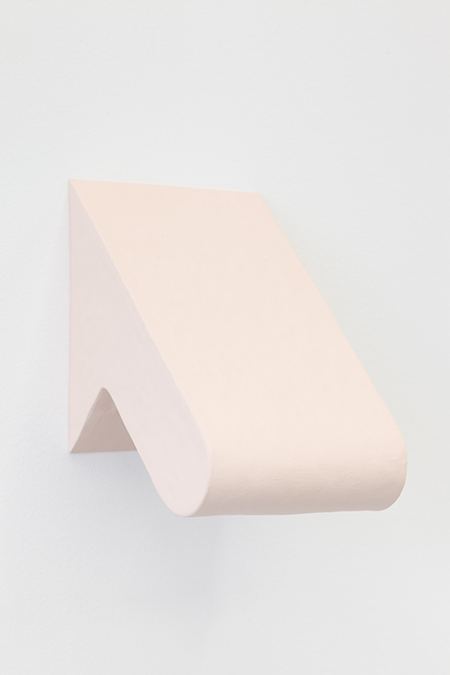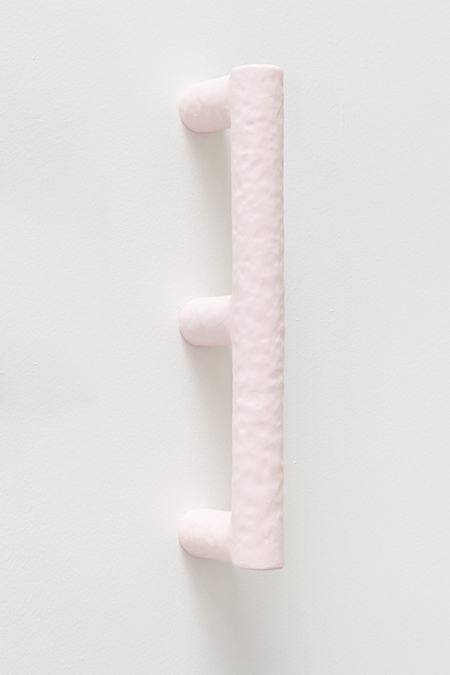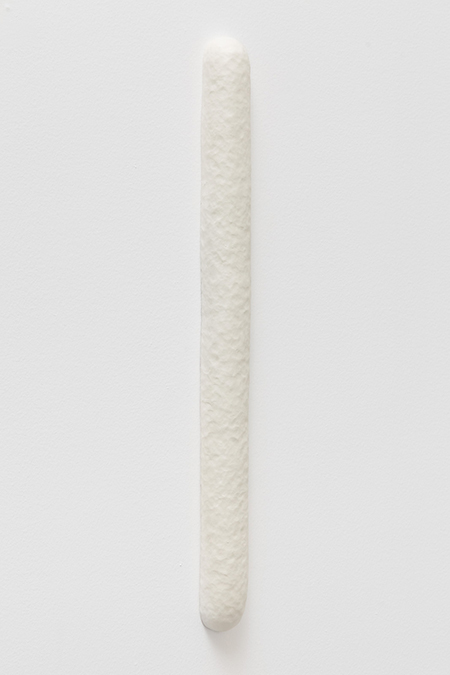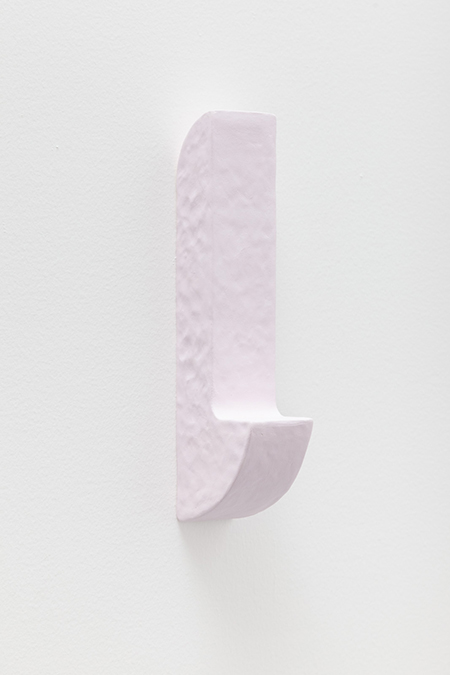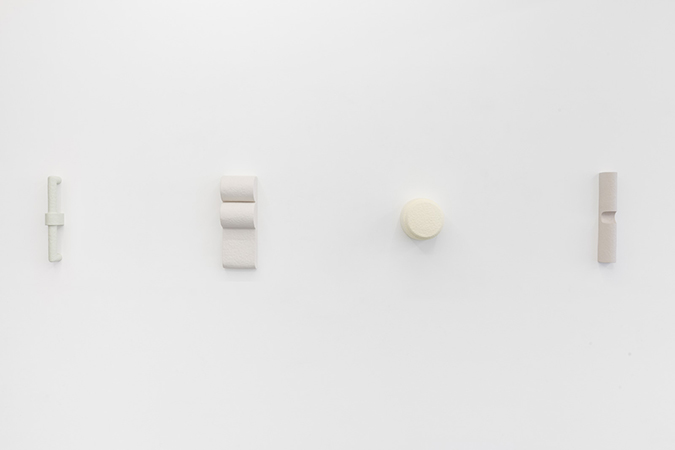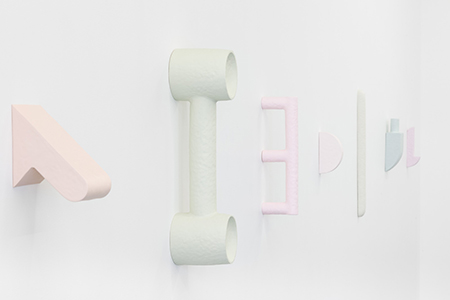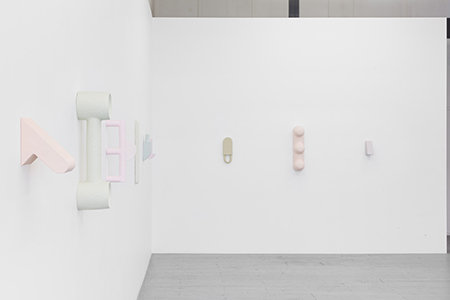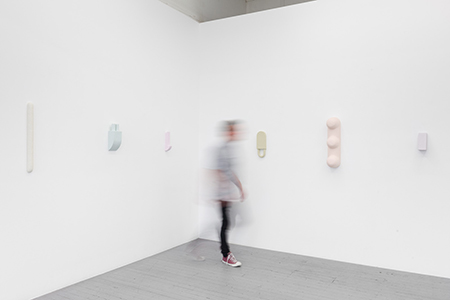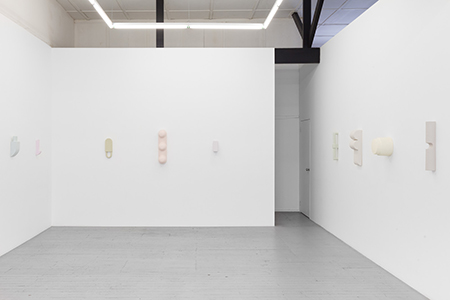
In old cartoons, you could tell an object was about to be activated if its image was somehow slightly off – the colour, the hue, the shape. It could be a can of spinach that Popeye was about to eat, or an anvil that Wile E. Coyote was about to drop on the Road Runner. Through the objects he creates, Addison Marshall highlights everyday items we might otherwise overlook. Unlike the cartoons of yore, these objects are sculpted to create comfort not con ict – their purpose is to calm instead of creating tension.
‘Comfort Zones’ is a collection of new works by artist Addison Marshall. Addison de nes a comfort zone as “a situation or space where one feels safe or at ease”. Through the process of making, Addison discovers what each object will be, instinctively drawn to aesthetic properties that provide him with solace. A hybrid of form and function, these sculptures combine references from high and low culture, and are both playful and poignant. Inhabiting the gallery space, they could be seen as theatre props or décor in a surrealist play, or curious artefacts of alien origin. In Addison’s words, “They allude to something domestic and recognisable but throw you off as meanings are placed upon them… The pieces take on an interior theme and allude to everyday domestic objects, ttings and xtures – railings, aircon units, light switches, etc – things that are around us but go unrecognised. Beauty in the banal and a celebration of the mundane.”
Reference points that Addison consciously pulls from include 70s Italian design, brutalist architecture, and Memphis style. As an audience member, I see his work sitting comfortably alongside contemporaries like Robert Beatty, and Alex Israel. He may not be conscious of the in uence it seems that Sydney has on these artworks, a seaside breeze sweeping between the items, underscored by gritty Darlinghurst utilitarianism.
“These things look content as objects existing in their own right in their own environment,” Addison notes. “They claim space comfortably and con dently”. They have an air of introspection and calm, which Addison says echoes his feelings while creating them. This particular body of work is linked by material, colour and shape. Frustrated with glazes and the limitation of colour range, Addison felt drawn to experiment and expand the colour application for ceramic forms. “The colours I used are actually house paints, providing another nod to interiors,” he explains. “Each work is named after its colour swatch, each ceramic piece assigned its own colour. There are 17 works so there are 17 different colours”. The series continues Addison’s investigation into ongoing fascinations: shape, form, colour, ambiguity, introspection and contemplation, plus the nal ingredients, order and placement within the interior. How the objects interact with or relate to each is a fundamental question, underscoring and tying together the other elements investigated.
These objects are not just built by hand but conceived by the hand, manipulated and reassessed on how each piece feels and looks, manifestations of the thoughts and feelings active during each making process. For the viewer, these items are not just open to interpretation but intended for interpretation. “Inquiry is evident in my practice,” explains Addison “from me making the work to the viewer deciphering the work.”
What forms our individual aesthetics? What makes an object comforting to me, but uncomfortable for you? In an increasingly dematerialised world, Addison Marshall makes objects that highlight the comfort of the physical space we inhabit.
Dr Wilfred Brandt 2018

